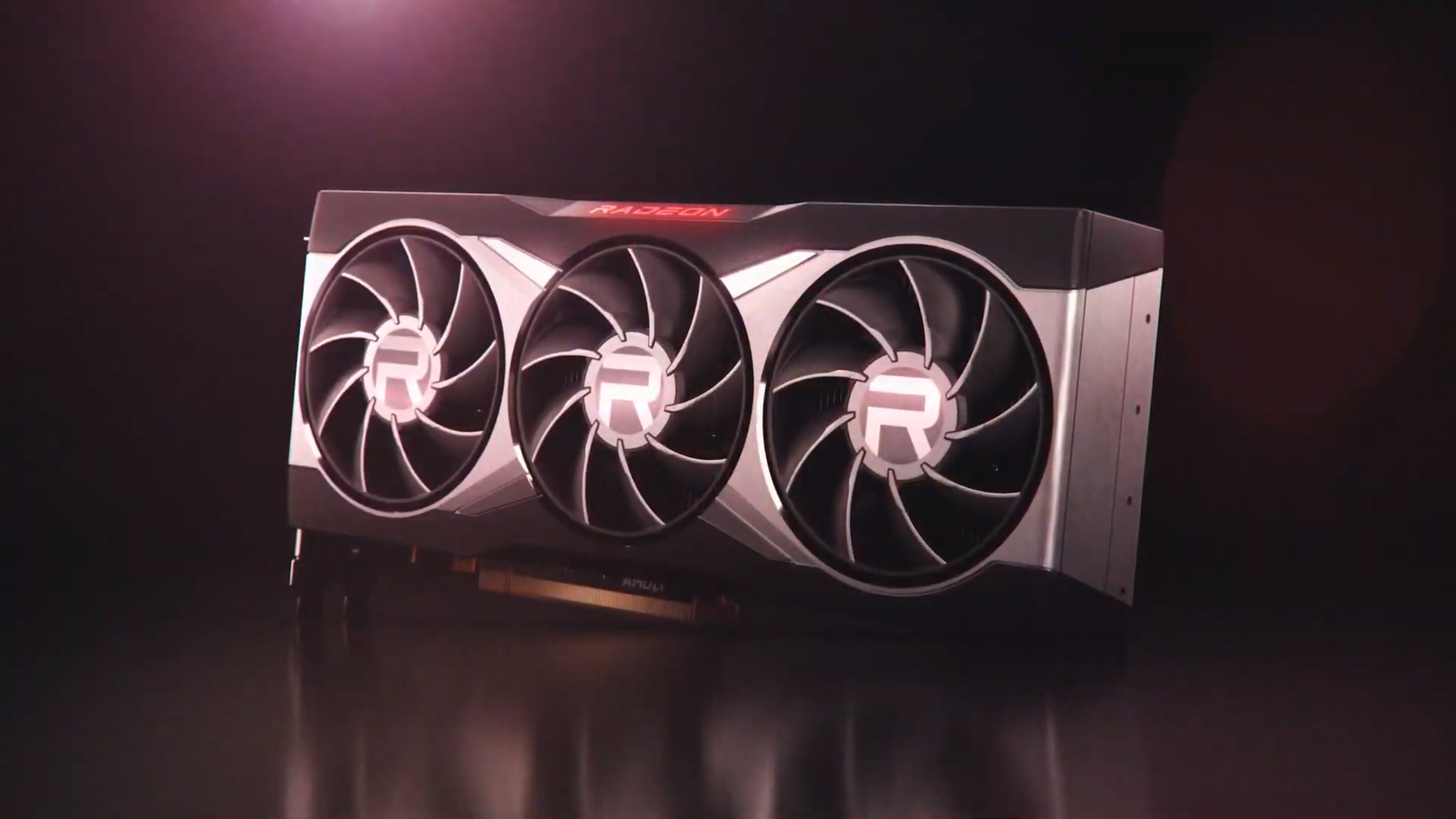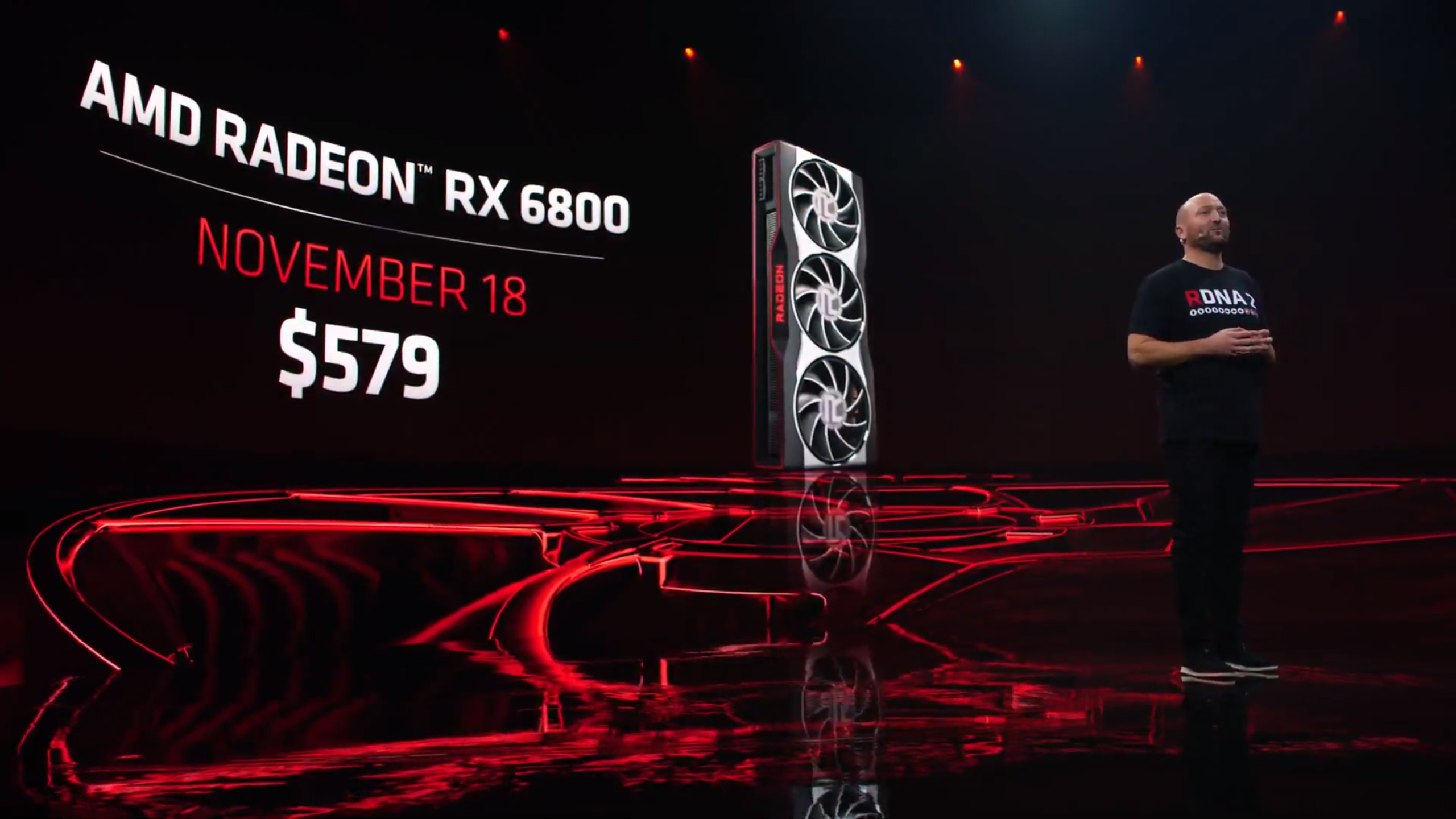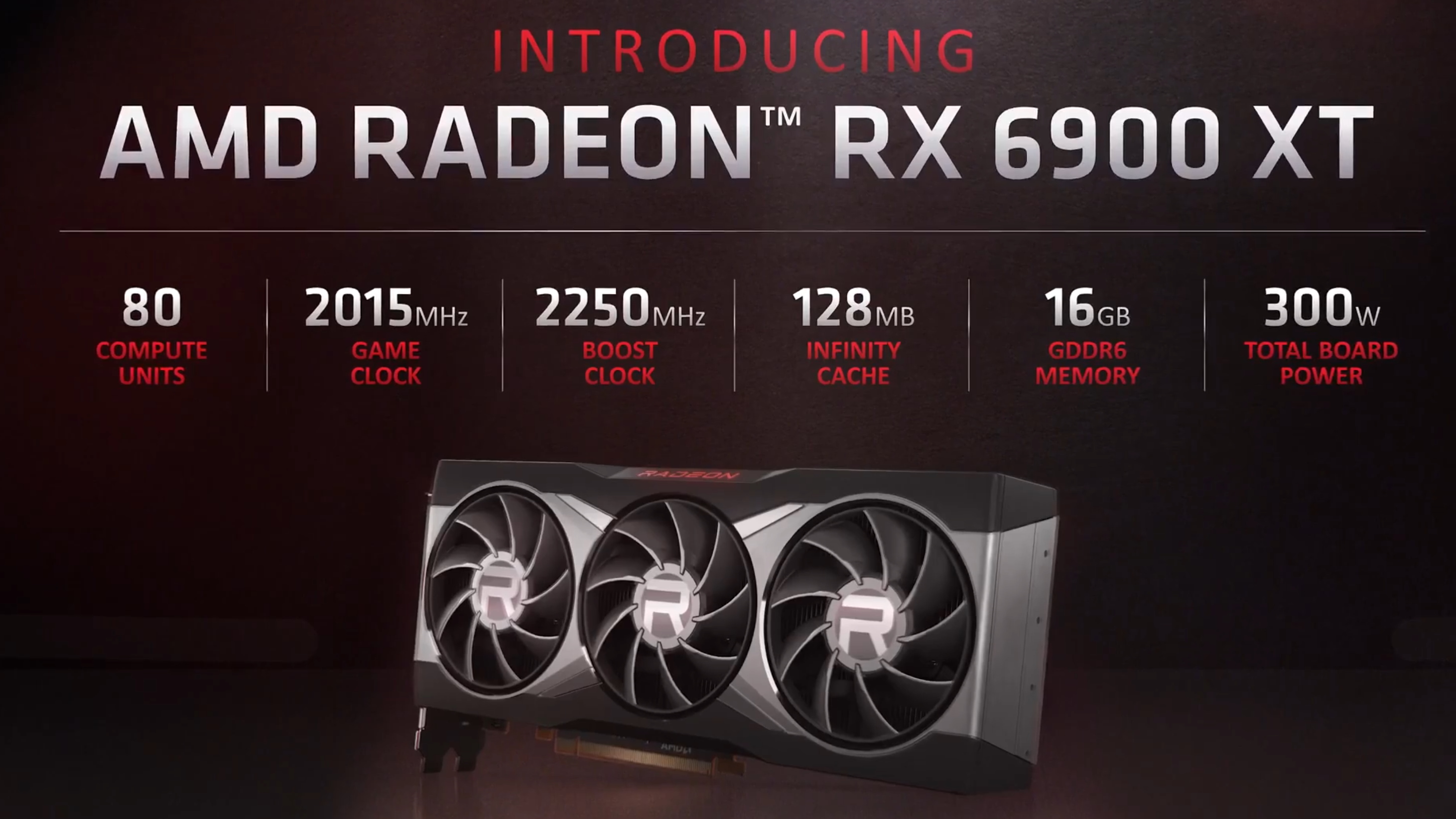AMD Big Navi is out and unveiled in all its glory. Nvidia’s RTX 3000 GPUs deliver impressive performance, so graphics card enthusiasts have high expectations of AMD’s long-rumored Nvidia killer. Luckily, Team Red is now in the perfect position to take on Nvidia's RTX 3080, RTX 3090 and RTX 3070 GPUs.
With the AMD Big Navi, which runs RDNA 2 tech, AMD is coming out of its budget and mid-range shell and returning to the high end – something that CEO Lisa Su hinted herself in October 2020. And, offerings like the Radeon RX 6800 XT, Radeon RX 6800 and the mighty Radeon RX 6900 XT, are certainly surpassing expectations – even if they’re a little pricier than AMD’s normal price point. RDNA 2 is also the graphics architecture behind the Xbox Series X and PlayStation 5, so they’re giving us a good idea of what kind of performance those next-gen consoles will bring.
That isn’t to say that AMD is now only focusing on the high-end market with its Big Navi cards. There are other more affordable options in the series as well, which could include the new Radeon RX 6000 GPU it's getting ready to launch tomorrow. So, whether you’re looking for a big-budget purchase in the GPU market or need something more affordably priced, there’s certainly something for you in the AMD Big Navi series.
Cut to the chase
- What is it? AMD's high end graphics cards
- When is it out? November 18
- What will it cost? Starting at $579 (around £440, AU$820) for the Radeon RX 6800

AMD Big Navi release date
It seems like AMD Big Navi release date rumors have been everywhere since the very beginning of time – or at least since Navi rumors first started appearing in late 2018. Initially, we had heard that Big Navi would be launching at Computex – but Computex didn’t even happen.
Days after Nvidia’s announcement of the RTX 3080 however, AMD teased the launch of both its Zen 3 desktop processors and RDNA 2 graphics cards, with the latter expected to come in right before Halloween on October 28 at 12pm EST – just a couple weeks before the November 10 launch of the Xbox Series X that the graphics architecture will be powering.
On the day, AMD announced that the AMD Radeon RX 6800 and Radeon RX 6800 XT will launch on November 18. Meanwhile, the Radeon RX 6900 XT will arrive a little later on December 8.

AMD Big Navi price
AMD has traditionally enjoyed a reputation for providing more affordable products than their competition.
And to back this up, we'd like to point to the AMD Radeon VII. With this graphics card, AMD genuinely provided performance that was pretty close to what the Nvidia GeForce RTX 2080 provided at the time, while sitting with a price tag of $679 (about £540, AU$970), which was very close to the RTX 2080's $699 (£649, AU$1,119) price tag at the time.
Now, since launching its Navi lineup, AMD has put some price pressure on Nvidia's mid-range lineup, most notably baiting Nvidia into lowering its prices on its Super cards at the last minute. So, we might see something that challenges the RTX 2080 Ti for maybe $200 (£200, AU$300) less than that card's MSRP, but don't expect graphics card prices to drop to where they were before Nvidia Turing made everything more expensive.
So, AMD's Big Navi lineup starts at $579 (around £440, AU$820) for the Radeon RX 6800, while the AMD Radeon RX 6800 XT costs $649 (around £500, AU$1,000) and the AMD Radeon RX 6900 XT will cost $999 (£770, about AU$1,400).
With the AMD Radeon RX 6800 XT and the AMD Radeon RX 6900 XT, AMD has undercut Nvidia's rival RTX 3080 and RTX 3090 cards, respectively.

AMD Big Navi specs and features
A big thing for Big Navi is taking on Nvidia's strongest graphics cards, which requires a lot of muscle, especially for the RX 6900 XT, which is directly targeting the RTX 3090. While we haven't got our hands on these graphics cards yet, the on-paper specs are incredibly impressive.
Right off the bat, the Radeon RX 6800 XT is looking like it's going to be the headline graphics card here, even if it's not quite in the same league as the Radeon RX 6900 XT – it's also much less expensive. AMD is claiming that this RTX 3080 competitor will be twice as powerful as the AMD Radeon RX 5700 XT.
That first-generation RDNA graphics card is packed with 40 compute units, with 2,560 Stream Processors (SPs), backed with a game frequency of 1,755 MHz. The Radeon RX 6800 XT, on the other hand, is packed with 72 Compute Units, with a game frequency of 2,015MHz. Assuming each RDNA 2 Compute Unit has the same amount of Stream Processors as RDNA, we're looking at about 4,608 SPs. When that's combined with the higher power budget and the 50% performance-per-watt goal that AMD claims, it isn't hard to believe that AMD will actually hit that number.
But do you know what other graphics card is around twice as fast as the RX 5700 XT? The Nvidia GeForce RTX 3080. Even according to the graphs AMD itself provides, the RX 6800 XT and the RTX 3080 are going to be trading blows, with neither card pulling definitively ahead across the board – this may be why Nvidia is rumored to be readying a GeForce RTX 3080 Ti.
What's perhaps even more interesting, however, is that the Radeon RX 6800 cuts the GPU down to 60 Compute Units, power down by 50W and brings the game clock down by 200MHz. This graphics card looks to be a pretty sizable increase in performance over the RTX 2080 Ti – which is about the same level as the newly-launched RTX 3070. However, the benchmarks shown off here are with Smart Access Memory enabled.
This is a feature that gives your CPU direct access to GPU memory, which takes a lot of latency out of the render pipeline. There's a catch, though – this feature will be exclusively available with AMD Ryzen 5000 processors on 500-series motherboards (including X570, B550 and A520). When AMD spoke on this feature it suggested that enabling this feature in addition to Rage Mode, which is essentially an AMD-supported overclock, can boost performance up to 13%. So, if you're using an older AMD processor or even an Intel chip, you could experience much less performance.
How much performance will depend on these features remains to be seen, but you can rest assured that we'll be putting it to the test once we get our hands on both the AMD Ryzen 5000 processors and the AMD Radeon 6000 graphics cards.
The biggest surprise, however, came at the end of AMD's presentation, when CEO Lisa Su revealed the Radeon RX 6900 XT. With this GPU, power consumption remains shockingly the same as the Radeon RX 6800 XT, but because it gets bumped up to 80 Compute Units, along with the same 2,015MHz Game Clock, performance gets a pretty massive boost.
Again, AMD showed off performance claims both with Rage Mode and Smart Access Memory enabled, which is a bit on the shady side, but it looks like it will be within the same ballpark as the Nvidia GeForce RTX 3090. And, again, this is while costing much less at $999 (about £770, AU$1,415) compared to the RTX 3090's $1,499 (£1,399, around AU$2,030) price tag.
At the end of the day, however, it's important to take all of AMD's performance claims with a grain of salt. Team Red is trying to sell a product, so it's going to pick the absolute best-possible results to share. AMD Big Navi performance seems incredible, but we're going to have to wait until we get these graphics cards in our lab to see just how powerful they actually are.
Until then, we can still sit and revel in the fact that AMD is finally taking Nvidia on at the high end. We can't stop thinking about the trajectory AMD took with Ryzen starting in 2017, and we certainly hope it takes a similar path with its RDNA graphics cards. The most interesting question is: will Nvidia take AMD's attacks lying down like Intel has? Or will it hit back with strong innovation and pricing? We're definitely hoping for the latter, but we'll settle for the graphics card market being exciting again.
We've also included all the publicly available AMD Big Navi specs down below, for your reference:
AMD Radeon RX 6800 specs:
- 60 compute units
- 1,815MHz game clock
- 2,150MHz boost clock
- 128MB Infinity cache
- 16GB GDDR6 memory
- 250W total board power
AMD Radeon RX 6800 XT specs:
- 72 compute units
- 2,015MHz game clock
- 2,250MHz boost clock
- 128MB Infinity cache
- 16GB GDDR6 memory
- 300W total board power
AMD Radeon RX 6900 XT specs:
- 80 compute units
- 2,015MHz game clock
- 2,250MHz boost clock
- 128MB Infinity cache
- 16GB GDDR6 memory
- 300W total board power
These Big Navi GPUs will feature "Rage Mode" for one-click overclocking, along with AMD Smart Access Memory, and when paired with an AMD Ryzen 5000 processor, these features are, AMD promises, able to give some serious boosts to game performance.
- We'll show you how to build a PC
from TechRadar - All the latest technology news https://ift.tt/3dGzSFY
No comments:
Post a Comment